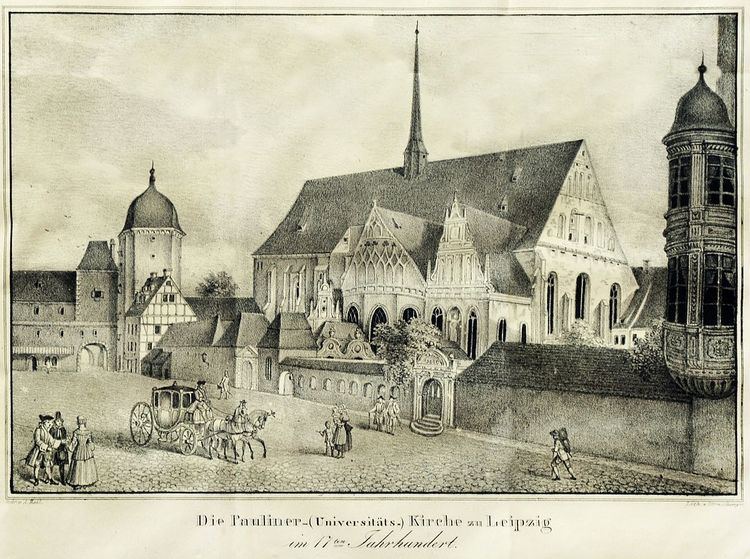Movements 11 in two parts (7, 4) | ||
 | ||
Related Performed 17 October 1727 (1727-10-17): Leipzig Vocal SATB soloists and choir | ||
Laß, Fürstin, laß noch einen Strahl (Let, Princess, let still one more glance) is a secular cantata composed as a funeral ode by Johann Sebastian Bach, first performed on 17 October 1727. In Wolfgang Schmieder's catalogue of Bach's works (BWV) it was assigned the number 198. It is also known as Trauerode or as Trauerode: auf den Tod der Königin Christiane Eberhardine.
Contents
History and text
Bach composed the cantata at the request of the University of Leipzig as a funeral ode for Christiane Eberhardine, wife of August II the Strong, the Elector of Saxony. The cantata was first performed on 17 October 1727 in the University Church in Leipzig. Bach himself directed from the harpsichord. The text was written by Johann Christoph Gottsched, professor of philosophy and poetry.
The text is purely secular, proclaiming how the kingdom is in shock over the princess' death, how magnificent she was, and how sadly she will be missed. Sacred elements pertaining to salvation and the afterlife are absent. Bach, however, as was his custom, included a cryptic reference to salvation in the music. The first movement of the second section Der Ewigkeit saphirnes Haus ("Eternity's sapphiric house"), which was performed following the oration, contains underlying elements of the first movement of the cantata BWV 56, Ich will den Kreuzstab gerne tragen ("I want to bear the cross") which Bach had composed one year earlier. The measures 70–75 contain a direct quote (played by the oboe) of the bass solo voice in measures 91–98 from BWV 56 where the text is Der führet mich nach meinen Plagen zu Gott, in das gelobte Land ("which leads me to God in the promised land after all my tribulation").
Bach later borrowed from the cantata for his Markus-Passion and for Klagt, Kinder, klagt es aller Welt, BWV 244a, another funeral ode written in 1729.
Scoring and structure
The cantata is scored for four vocal soloists (soprano, alto, tenor, bass), a four-part choir, two flutes, two oboes d'amore, two violins, viola, two violas da gamba, two lutes and basso continuo.
The ten movements are divided into two parts, to be performed before and after the funeral oration.
First part- Chorus: Laß, Fürstin, laß noch einen Strahl
- Recitative (soprano): Dein Sachsen, dein bestürztes Meißen
- Aria (soprano): Verstummt, verstummt, ihr holden Saiten!
- Recitative (alto): Der Glocken bebendes Getön
- Aria (alto): Wie starb die Heldin so vergnügt!
- Recitative (tenor): Ihr Leben ließ die Kunst zu sterben
- Chorus: An dir, du Fürbild großer Frauen
- Aria (tenor): Der Ewigkeit saphirnes Haus
- Recitative (bass): Was Wunder ists? Du bist es wert
- Chorus: Doch, Königin! du stirbest nicht
